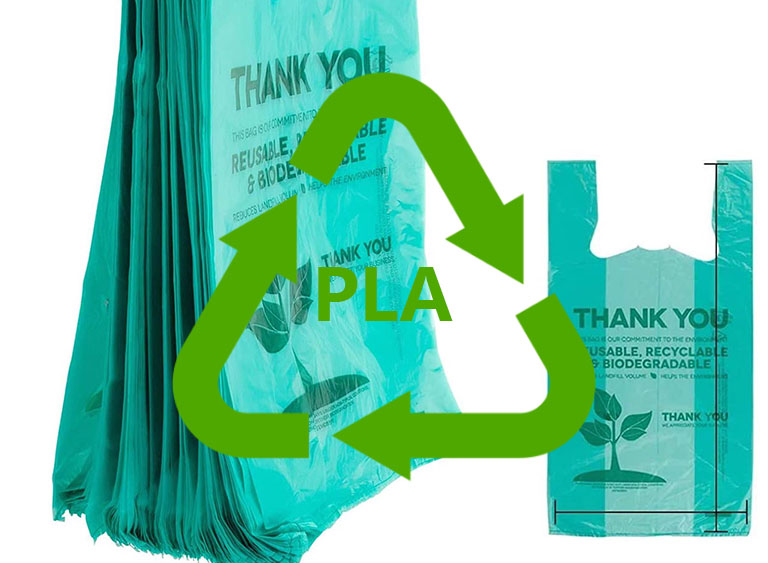Plastic film, also known as plastic wrap or cling film, is commonly used for packaging and covering food items. With the increasing awareness of the negative impact of plastic on the environment, there is a growing demand for sustainable alternatives. Biodegradable plastic film is one such alternative that has gained popularity in recent years. However, it is essential to understand the types of biodegradable plastic film and the recycling process to ensure proper waste management. In this post, we will discuss biodegradable plastic film recycling in detail.
Types of Biodegradable Plastic Film
There are various types of biodegradable plastic film available in the market. Some of the commonly used types are:
Polylactic Acid (PLA)
PLA is a biodegradable and compostable plastic made from renewable resources such as cornstarch, sugarcane, or cassava. It is commonly used for food packaging, agricultural films, and medical implants.
Polyhydroxyalkanoates (PHAs)
PHAs are biodegradable and biocompatible polyesters that are produced by microbial fermentation of renewable resources such as vegetable oils or sugars. They are commonly used for packaging, medical implants, and tissue engineering.
Polybutylene Succinate (PBS)
PBS is a biodegradable polyester that is derived from renewable resources such as cornstarch, sugarcane, or potatoes. It is commonly used for food packaging, agricultural films, and shopping bags.
Polybutylene Adipate Terephthalate (PBAT)
PBAT is a biodegradable polyester that is commonly used for packaging, shopping bags, and agricultural films. It is produced from renewable resources such as cornstarch, sugarcane, or vegetable oil.
Common Biodegradable Plastic Applications
Biodegradable plastic films have been found to be suitable for a wide range of applications, including but not limited to:
- Agriculture: Biodegradable films are used in agriculture to cover the crops, which helps to protect them from pests, wind, and rain.
- Packaging: Biodegradable plastic films are widely used in the packaging industry, especially for food packaging. They can be used for packaging fresh produce, meat, and other perishable goods.
- Mulching: Biodegradable films can be used for mulching, which involves covering the soil with a layer of material to retain moisture, reduce weed growth, and improve soil health.
- Medical: Biodegradable plastic films are used in the medical industry to produce items like surgical gloves, gowns, and syringes.
- Textiles: Biodegradable plastic films can be used to produce textiles such as clothing, curtains, and upholstery.
The use of biodegradable plastic films is increasing rapidly due to the growing concern over environmental pollution. With more and more consumers becoming aware of the impact of plastic waste on the environment, the demand for biodegradable plastic films is expected to increase further in the future.
Despite the advantages of biodegradable plastics, there are still challenges associated with their production and disposal. One of the major challenges is the lack of infrastructure for the collection and processing of biodegradable plastic waste. As a result, much of the biodegradable plastic waste still ends up in landfills, where it can take years to decompose.
Recycling Biodegradable Plastic Film(Traditional Way)
The recycling process of biodegradable plastic film is similar to that of traditional plastic film. However, the biodegradable plastic film requires a separate collection and processing system to prevent contamination with non-biodegradable plastics. The following are the steps involved in biodegradable plastic film recycling:
Collection
The first step is to collect the biodegradable plastic film separately from other waste. It is essential to ensure that the biodegradable plastic film is not mixed with non-biodegradable plastic film to avoid contamination.
Sorting
After collection, the biodegradable plastic film is sorted based on its type and color. This step is necessary to ensure that only one type of plastic film is processed at a time, avoiding contamination.
Cleaning
The next step is to clean the biodegradable plastic film to remove any dirt or debris. This is important to ensure that the recycled plastic film is of high quality.
Shredding
Once the plastic film is cleaned, it is shredded into small pieces. This increases the surface area, making it easier to melt and process.
Melting and Extrusion
The shredded plastic film is melted and extruded into pellets. The pellets are then cooled and cut into small pieces for further processing.
Pelletizing
The final step is to pelletize the recycled plastic film. The pellets can be used to manufacture new biodegradable plastic film products.
Recycling Biodegradable Plastic Film(New-tech Way)
And for biodegradable plastic film products manufacturers, there is a new-tech way to do the biodegradable film onsite, that’s using a new-tech plastic granulator, this machine simple the process, lower the investment, and what’s important, it does no harm to the environment. More from here.
Conclusion
Biodegradable plastic film recycling is an important step towards reducing plastic waste and protecting the environment. With the development of new technologies and the increasing demand for sustainable materials, the future of biodegradable plastics looks promising. It is up to individuals, businesses, and governments to take responsibility for their plastic waste and support the development of a more sustainable future.

